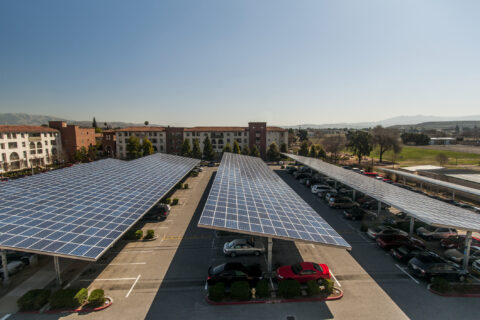The city of Tuttle, Oklahoma (pop. 7,300) sits just to the southwest of Oklahoma City, and a significant portion of its residents live there while working in the metropolis. As such, they need reliable, high-quality Internet access at home.
This became a problem a decade ago when the local cable company, providing the only universal wireline Internet service in the area, went bankrupt. “For a little while it got put on autopilot with nobody operating it,” City Manager Tim Young told KFOR News. “Then one day, right before an OU football game, the power got cut off and that was it for a cable service in Tuttle.”
Building Something Better
The event left the city stranded without much warning. High-cost, high-lag, low-bandwidth satellite service from ViaSat was one option. AT&T offered DSL service in some parts of the downtown core, but the company “hadn’t upgraded its copper network in Tuttle in decades,” said City Manager Tim Young in a recent interview. The last choice was a regional Wireless Internet Service Provider (WISP) named Rise Broadband which operated in the area. It had offered less-than-ideal service connecting government buildings for years, but the problem for residents was that it was geared at rural areas around the town rather than the city proper. At the time, it was struggling to provide 3 Mbps symmetrical service because of the overwhelming demand by residents and businesses.
As a suburbanizing community, Tuttle needed a better option. The city was experiencing rapid growth, which began when a bridge was built over the Canadian River providing a direct path to Oklahoma City in 2004.
Tuttle’s local leaders rolled up their sleeves and got to work. Their first move was to solicit private ISPs to come to town and offer service. With few encouraging responses, they decided building and operating their own network was an undertaking at which they could succeed.
They spoke with officials in Sallisaw, a rural community about 180 miles directly east that had built a fiber network called DiamondNet to provide service to residents in town as well as a handful of surrounding communities starting in 2015. The city council also traveled to speak with engineers at the Northeast Oklahoma Electric Cooperative, which was embarking on a Fiber-to-the-Home (FTTH) project for its roughly 38,000 members scattered across seven counties. Finally, they looked nationally, noting the success of municipal networks in Oregon and Colorado.
From Pilot to Permanent
The town already had an institutional network – in the form of a fiber star – in place, built-in 2012 to connect the Public Works and Public Safety buildings at the same time as the construction of a new City Hall. The city formed the Tuttle Development Authority to secure the necessary financing and completed the engineering and business plan work needed to move forward. Once finalized, it began with a small pilot project aimed at a few denser neighborhoods where an internal feasibility study had projected a high take rate among residents. Ultimately, Tuttle took on $10 million in debt via private lending, using revenues from its other utility system revenues as collateral.

With firm plans to forge ahead, public works formed a new construction department to coordinate digging around the city, and served as the first stop for the new fiber network. Construction began in 2017. By November 2019 the network passed 55% of premises, and 800 households had taken service. Originally projected to be a five-year project, Tuttle, Oklahoma’s citywide fiber-to-the-home (FTTH) network was completed in the late fall of 2020 after just 3 years, driven by strong residential and business demand. The Gigabit Passive Optical Network (GPON) passes nearly every premise in town. About 85% of the network ended up being buried. The remaining aerial fiber hangs on Oklahoma Electric Cooperative’s power poles. Tuttle’s design called for strand counts ranging from as low as six to as high as 288.
The network hit an important milestone shortly after construction was finished last December: its financial break-even point. In response, the city council announced it was lowering prices for residents. From the start, the network aimed at a 50 percent takes rate. Today it meets or exceeds that threshold in almost every area (hitting an average of 54.4 percent across its footprint), and sees take rates as high as 90 percent in parts of town. Today it passes 2,864 premises, with 1,557 taking service.
Local Resiliency, Community Savings
The finished network connected the city library and several healthcare facilities, not only solving existing communications problems for the local government but giving existing and new residents who decide to settle there, businesses, and community anchor institutions world-class Internet access for decades to come.
The network is beginning to explore the extra value, flexibility, and capabilities of using the network for smart city services like traffic signals, cameras, remote locks, public Wi-Fi, SCADA systems, and water/wastewater monitoring. A new wastewater plant is currently being built, and the city will bring fiber as part of the project to communicate with lift stations and obviate the need for 24/7 staffing with real-time remote monitoring.
“I believe more municipalities should take on projects like this. Fiber’s no different than water, sewer, and streets. You’ve got to have your connection to the information superhighway. When you’re a for-profit company, you don’t have any incentive to upgrade your systems unless you have competition. As a municipal government, we’re not here to make money. Our focus is to provide the best possible system for our residents and so we are always willing to upgrade and invest in those systems.”
– Tim Young, City Manager

Today, the state of Oklahoma ranks near the bottom nationally for broadband access, according to the Oklahoma Policy Institute. Almost a quarter of the state lacks wireline service at the FCC’s minimum speed standard of 25/3 Mbps, and more than 150,000 students across the state did not have the service necessary to learn remotely during the Covid-19 pandemic. Households in rural areas are twice as likely to have no connectivity options, as are those earning less than $20,000/year: 40% of the latter have no Internet access (including via smartphone), compared to just 6% of those households making $75,000 or more. Residents of Tuttle are among the just 1 in 4 who have access to fiber service from a provider, the result of forward-thinking local leaders who committed to owning their information infrastructure future.
Oklahoma broadband map from Brian Whitacre, Professor and Jean & Patsy Neustadt Chair in the Department of Agricultural Economics, via Oklahoma State University Extension, “Broadband Access Across Oklahoma During Covid-19” (2021). https://extension.okstate.edu/coronavirus/media/household/broadband-access.pdf

About the Author:
Ry Marcattilio-McCracken, Senior Researcher, Institute for Local Self-Reliance









